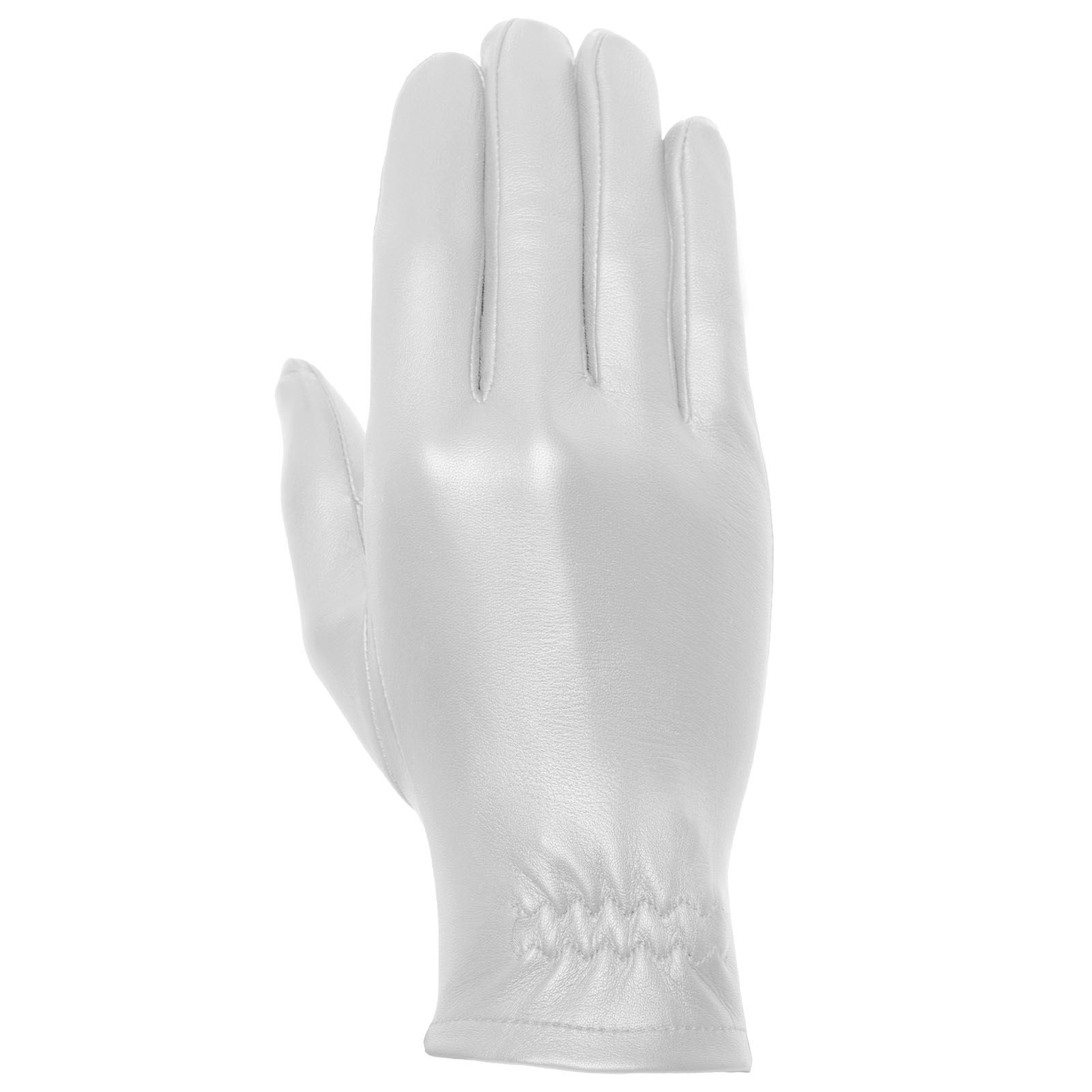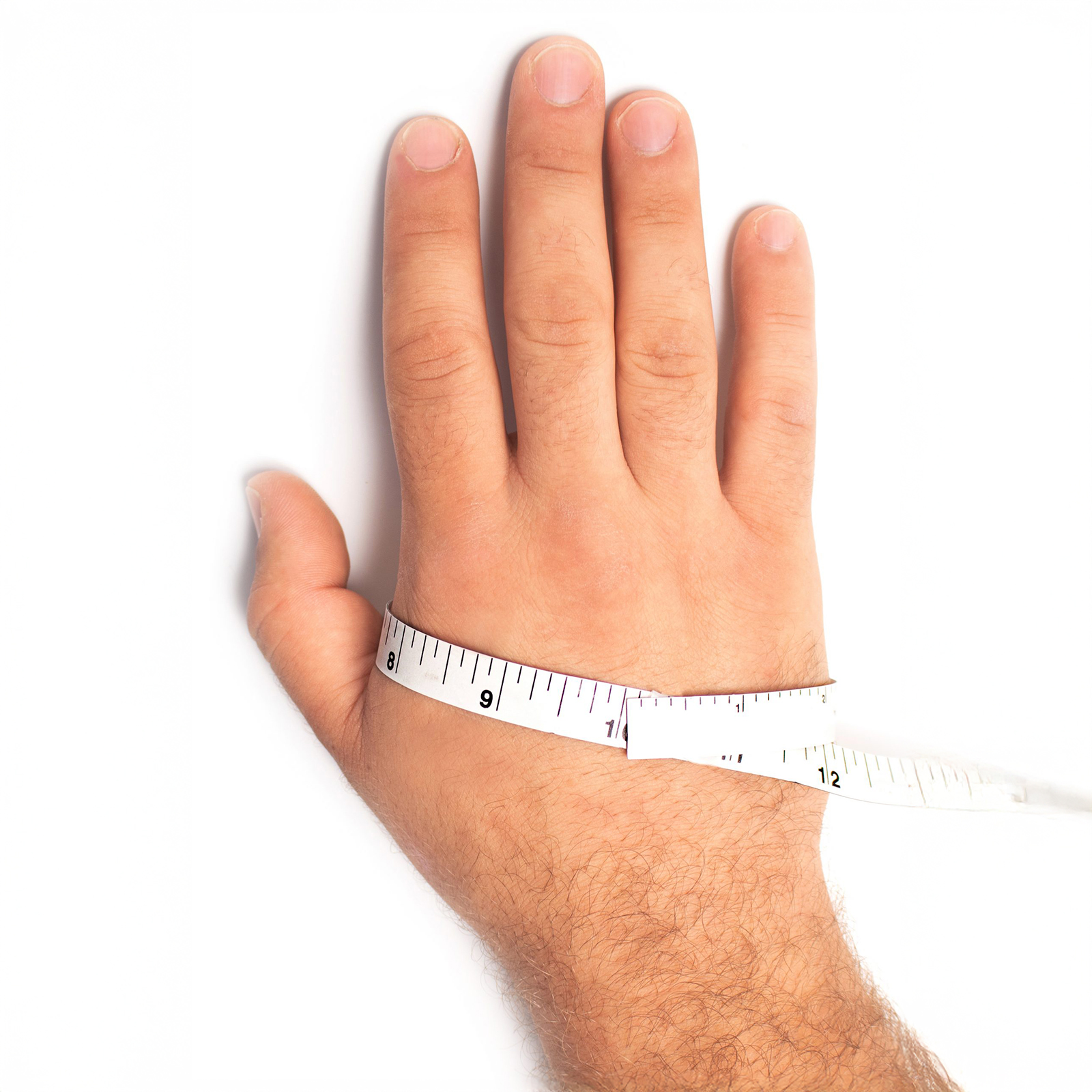How to Clean Leather Gloves

To clean leather gloves without ruining them, use a damp microfiber cloth with mild soap (like saddle or Castile soap) and gently wipe the surface. Avoid soaking or harsh chemicals. For stains, use vinegar for watermarks, rubbing alcohol for ink, and baking soda for oil. Always air dry at room temperature and apply leather conditioner to prevent cracking.
The Moment You Realize Your Leather Gloves Need Cleaning
It happens to everyone. You slip your hands into your favorite pair of leather gloves—once soft, sleek, and comfortable—only to notice something feels different. The leather is stiff, the fingers don’t move as smoothly, and maybe there’s even a faint odor you hadn’t noticed before. You take them off and inspect them closely.
There it is: dark smudges on the fingertips, a few stubborn stains, and a dull, dry texture that wasn’t there before. Maybe you wore them out in the rain one too many times, handled something greasy without thinking, or simply let months of wear build up without realizing it.
Now the question hits you: How do I clean these without ruining them?
You’ve heard the warnings: “Never put leather gloves in the washing machine!” But beyond that, advice is scattered. Some say use soap, others say water is the enemy, and then there’s the fear of shrinking or cracking the leather completely.
If this sounds familiar, you’re in the right place. I wrote this guide because I’ve been there too. Yes, I know how frustrating it is to want to care for your gloves properly but feel overwhelmed by conflicting advice.
This guide will take you through exactly how to clean your leather gloves the right way, step by step, so you can restore their softness, maintain their quality, and make them last for years to come. Let’s get started!
Cleaning Leather Gloves with Care
Leather gloves are a timeless accessory, offering warmth, protection, and style. Whether they’re made from premium deerskin, soft lambskin, or durable cowhide, keeping them clean without damaging their integrity requires special care. Unlike fabric gloves, leather is porous, absorbs oils, and can stiffen or crack if not properly maintained. Washing them incorrectly can ruin them forever.
If you’ve ever wondered how to clean leather gloves without ruining them, here we’ll cover everything you need to know—from removing stains to conditioning for long-term durability. Follow these steps to keep your gloves looking new while preserving their softness and shape.
Why You Should Avoid Machine Washing Leather Gloves
Let’s get this out of the way: never toss your leather gloves into the washing machine. The harsh agitation, excessive water exposure, and strong detergents strip the leather of its natural oils, causing it to dry out, crack, and shrink beyond repair.
Instead, leather gloves require gentle hand-cleaning methods that respect the material’s natural properties.
Common Mistakes That Ruin Leather Gloves:
- Using hot water (causes shrinkage and stiffness)
- Soaking in water (weakens leather fibers)
- Using harsh chemicals (removes natural oils, making gloves brittle)
- Drying with heat (warps and cracks the leather)
It might seem tempting to toss your leather gloves into the washing machine for a quick clean, especially if they’re heavily soiled. But doing so is a one-way ticket to ruining them. Unlike fabric gloves, leather is a natural material that requires careful handling to maintain its softness, shape, and durability.
What Happens When You Machine Wash Leather Gloves?
- Leather absorbs water like a sponge. Leather is porous, meaning it soaks up water easily. When fully submerged or excessively wet, the natural oils that keep the leather supple and flexible are washed away. Without these oils, leather becomes dry, stiff, and prone to cracking.
- Agitation warps the shape. Washing machines use spinning and tumbling to clean fabric. For leather gloves, this rough treatment distorts the shape, weakens seams, and stretches the material unevenly. Once warped, they may never fit your hands properly again.
- Harsh detergents strip natural oils. Most laundry detergents contain strong chemicals designed to break down dirt and stains. These chemicals strip away essential oils in leather, leading to brittleness and premature aging.
- Heat causes shrinkage and cracking. Spin cycles and machine drying introduce heat—leather’s worst enemy—which shrinks, stiffens, and cracks the material. If your gloves are lined, heat can also damage the interior fabric.
The Right Way to Clean Leather Gloves
Instead of machine washing, use a gentle hand-cleaning method with a damp microfiber cloth and mild soap. For stains, spot-treat with vinegar for watermarks, rubbing alcohol for ink, or baking soda for oil stains. Always air dry at room temperature and finish with a leather conditioner to restore moisture.
To safely clean your leather gloves, follow the right techniques below.
Step 1: Identify the Type of Leather
Before you start cleaning, it is crucial to determine what type of leather your gloves are made from. Different leathers react differently to water, soap, and conditioners—using the wrong method can cause stiffness, discoloration, shrinkage, or permanent damage.
Think of leather like human skin. Some skin types need more moisture, while others react poorly to certain products. The same applies to leather gloves. Understanding the material will help you choose the safest cleaning approach, so your gloves stay soft, flexible, and in top condition.
How to Identify Your Leather Type
Most gloves fall into one of four main leather categories. Below are the key features of each and their proper cleaning approach.
1. Full-Grain Leather (Most Durable, Found in Work Gloves)
- Texture: Thick, sturdy, and slightly stiff at first but softens over time.
- Appearance: Natural grain pattern; may have visible pores or imperfections.
- Common Uses: Heavy-duty work gloves, motorcycle gloves, and driving gloves.
- Cleaning Approach: Spot clean with a damp microfiber cloth and mild soap. Condition with a leather balm or oil after drying.
- What to Avoid: Excessive water exposure; full-grain leather soaks up moisture quickly, leading to cracking when it dries.
2. Nappa Leather (Soft & Luxurious, Found in Dress Gloves)
- Texture: Smooth, buttery, and flexible.
- Appearance: Refined, uniform finish with a slight sheen.
- Common Uses: High-end dress gloves, fashion gloves, and luxury driving gloves.
- Cleaning Approach: Use a very mild soap and a barely damp cloth. Avoid excessive moisture. Condition with a high-quality leather cream.
- What to Avoid: Harsh detergents or vigorous scrubbing; Nappa is delicate and can dry out or lose its smooth finish.
3. Deerskin Leather (Flexible & Naturally Water-Resistant)
- Texture: Soft, supple, and very flexible.
- Appearance: Matte finish with visible natural grain; often slightly pebbled.
- Common Uses: Outdoor gloves, riding gloves, and casual everyday gloves.
- Cleaning Approach: Can handle mild soap and slightly more moisture than other leathers. Clean with a damp cloth and gently massage the leather while cleaning. Condition after drying.
- What to Avoid: Drying near heat sources; direct heat can make it stiff.
4. Suede or Nubuck Leather (Requires Special Care)
- Texture: Soft, velvety, and delicate.
- Appearance: Matte and slightly fuzzy with a fine nap.
- Common Uses: Fashion gloves and casual winter gloves.
- Cleaning Approach: Avoid water-based cleaning. Use a suede brush to remove dirt. For stains, a suede eraser or white vinegar can help.
- What to Avoid: Water, soap, or regular leather conditioner; these can ruin the texture and leave permanent marks.
How to Confirm Your Leather Type
- The Manufacturer’s Label: Many gloves have care tags inside that specify the leather type and recommended cleaning method.
- The Texture and Feel: Thick and slightly rough suggests full-grain; buttery-smooth suggests Nappa.
- The Appearance: Deerskin often looks pebbled; suede has a soft, fuzzy surface.
Understanding your leather type is the foundation of proper glove care. Once you’ve identified it, you can move on to the correct cleaning method without the risk of ruining your gloves.
Step 2: Surface Cleaning (Dirt and Light Stains)
Now that you have identified your leather type, the next step is removing surface dirt and light stains without damaging the leather. Leather is a natural material, meaning it absorbs oils, moisture, and dirt over time. Cleaning it properly requires a gentle approach to avoid stripping the leather of its essential oils and protective coatings.
If leather is cleaned incorrectly, it can become stiff, cracked, or discolored. The goal of this step is to lift dirt and grime without soaking or weakening the leather fibers.
What You’ll Need
- Microfiber cloth or soft sponge
- Mild soap (Castile, saddle soap, or baby shampoo)
- Lukewarm water
- Leather conditioner (optional, for after drying)
How to Clean the Surface of Leather Gloves
- Prepare a cleaning solution:
- Fill a small bowl with lukewarm water.
- Add one or two drops of mild soap; stir gently.
- Dampen the cloth:
- Dip the microfiber cloth into the soapy water.
- Wring thoroughly so it’s damp, not dripping.
- Wipe gently:
- Lay the gloves flat on a clean surface.
- Use light circular motions from wrist to fingertips.
- Focus on palms, fingertips, and between fingers.
- Remove soap residue:
- Rinse the cloth with clean lukewarm water (no soap).
- Wipe the gloves again to remove residue.
- Air dry:
- Lay flat in a ventilated area away from heat/sun.
- Put them on briefly every hour to help maintain shape.
- Condition (optional):
- When fully dry, apply a small amount of conditioner.
- Rub in gently, focusing on knuckles, fingertips, and palm.
What to Avoid
- Soaking the gloves in water
- Aggressive scrubbing
- Harsh detergents, bleach, or alcohol-based cleaners
- Drying with heat or direct sunlight
When to Use This Cleaning Method
- Regular maintenance: Once a month.
- After light use: Quick wipe-down when slightly dirty.
- Before storage: Clean first to prevent set-in dirt.
Cleaning leather gloves correctly and consistently extends their lifespan, keeps them comfortable, and maintains their original look and feel. Once the surface dirt is removed, you can move on to handling deeper stains in the next step.
Step 3: Removing Tough Stains (Ink, Oil, and Watermarks)
Even with regular cleaning, stubborn stains can set into leather gloves. Unlike fabric, leather absorbs oils, ink, and moisture, making stains more difficult to remove. The key to lifting stains without ruining the leather is using the right cleaning method for each type of stain.
In this step, you will learn how to remove three of the most common tough stains: ink, oil/grease, and watermarks. Each type of stain requires a different approach to avoid damaging the leather’s surface.
How to Remove Ink Stains
What You’ll Need:
- Rubbing alcohol (isopropyl alcohol) or non-acetone nail polish remover
- Cotton swabs
- Microfiber cloth
How to Remove:
- Dampen a cotton swab with rubbing alcohol or non-acetone nail polish remover.
- Gently dab (do not rub) the stained area.
- Rotate to a clean swab tip as ink transfers.
- Repeat until the stain lifts.
- Wipe residue with a damp microfiber cloth.
- Air dry completely, then condition.
What to Avoid:
- Acetone-based products
- Aggressive rubbing (pushes ink deeper)
How to Remove Oil or Grease Stains
What You’ll Need:
- Cornstarch or baking soda
- Soft brush or dry cloth
- Leather cleaner (optional)
How to Remove:
- Blot excess oil with a dry microfiber cloth.
- Cover the stain with cornstarch or baking soda.
- Let sit for several hours or overnight.
- Brush off powder gently.
- Repeat or use a small amount of leather cleaner if needed.
- Condition after the stain is gone.
What to Avoid:
- Water (can push oil deeper)
- Dish soap or harsh degreasers
How to Remove Water Stains
What You’ll Need:
- Distilled water
- Microfiber cloth
- Leather conditioner
How to Remove:
- Lightly dampen a microfiber cloth with distilled water.
- Wipe the entire glove lightly (not just the spot) to blend.
- Air dry at room temperature.
- Condition when fully dry.
What to Avoid:
- Wet only the stained area (causes tide lines)
- Heat or direct sunlight while drying
When to Use These Methods
- Fresh stains: Act immediately.
- Set-in stains: May require multiple treatments.
- Preventative care: Regular conditioning helps resist deep stains.
By treating stains correctly and carefully, you preserve the leather’s appearance and softness without causing further damage. After stain removal, make sure the gloves are completely dry before moving on to conditioning and restoring their flexibility.
Step 4: Cleaning the Inside of Leather Gloves
Many people focus on cleaning the outside of leather gloves but forget about the interior. Over time, sweat, body oils, and dirt build up inside, leading to odor, bacteria growth, and even deterioration of the lining. If your gloves feel damp inside, have a strong smell, or just haven’t been cleaned in a long time, it’s time to refresh them properly.
Unlike the exterior, the inside of leather gloves cannot be scrubbed aggressively or soaked in water, as moisture can get trapped inside the leather, causing stiffness or mildew. Instead, use dry-cleaning methods for deodorizing and spot-cleaning techniques for light stains.
How to Clean the Inside of Leather Gloves
The cleaning method depends on whether your gloves have a lining or are unlined. Follow the steps below based on your glove type.
For Fabric-Lined Gloves (Silk, Wool, Cashmere, Fleece, or Cotton Linings)
What You’ll Need:
- Baking soda or cornstarch (for deodorizing)
- White vinegar or rubbing alcohol (for bacteria removal)
- Soft cloth or sponge
- Lukewarm water
How to Clean:
- Deodorize with baking soda: Sprinkle inside the gloves, let sit overnight, then shake out.
- Sanitize: Dampen a soft cloth with a 1:1 mix of white vinegar and water (or rubbing alcohol) and gently wipe the lining without oversaturating. Turn inside out if possible and air dry completely.
- Spot clean stains: Dab mild soap and water on stained areas; wipe away with a damp cloth and air dry.
For Unlined Leather Gloves (Direct Skin Contact with Leather)
What You’ll Need:
- A slightly damp cloth (not wet)
- White vinegar (for odor and bacteria control)
- Cornstarch or baking soda (for sweat absorption)
How to Clean:
- Light wipe: Use a 1:1 mix of white vinegar and water on a soft cloth to gently wipe the interior.
- Absorb moisture: Sprinkle cornstarch or baking soda inside for a few hours, then shake out.
- Air dry completely: Dry in a ventilated area away from heat/sun.
What to Avoid When Cleaning the Inside of Leather Gloves
- Soaking the gloves in water
- Aggressively scrubbing delicate linings
- Bleach or harsh chemicals
- Machine drying
How Often Should You Clean the Interior?
- Light use: Every few months.
- Heavy use (daily wear, winter gloves): About once a month or when odor starts.
- Before storing: Always clean and dry fully.
Properly cleaning the inside of your leather gloves not only makes them more comfortable to wear but also extends their lifespan. Once the inside is clean and fully dry, you can move on to conditioning and restoring flexibility in the next step.
Step 5: Conditioning Leather Gloves to Prevent Cracking
Once your leather gloves are clean and fully dry, the next crucial step is conditioning. Leather, much like skin, needs moisture to stay supple and flexible. Without proper conditioning, it dries out, becomes stiff, and may even crack over time.
Cleaning removes dirt and grime, but it also strips some of the natural oils that keep leather soft. Conditioning replenishes these oils, restoring elasticity and preventing the gloves from feeling rough or brittle.
This step is essential for all types of leather gloves, whether they are work gloves, dress gloves, or everyday casual wear.
Why Conditioning is Important
- Prevents drying and cracking
- Restores softness
- Maintains flexibility
- Prolongs lifespan
What You’ll Need
- Leather conditioner (cream or balm for gloves)
- Soft microfiber or lint-free cloth
- A clean, dry, ventilated workspace
How to Condition Leather Gloves
- Ensure the gloves are completely dry: Do not apply conditioner to damp leather.
- Apply a small amount to a cloth: Don’t apply directly to the gloves. Start with a dime-sized amount.
- Massage in gently: Use light circular motions; focus on fingers, knuckles, and palm.
- Let absorb: Rest at least 30 minutes. Add a thin second layer if still dry.
- Buff excess: Use a clean, dry cloth so the finish isn’t greasy.
- Let rest: Leave in a cool, dry place for a few hours before wearing.
What to Avoid When Conditioning Leather Gloves
- Over-applying conditioner
- Household oils (olive/coconut)
- Shoe/furniture-only conditioners that are too heavy
- Rushing absorption
How Often Should You Condition Leather Gloves?
- Occasional use: Every 3–6 months.
- Frequent use: Every 1–2 months (more often in dry climates).
- After cleaning: Always condition.
- Before storing: Condition to prevent drying out.
By following this conditioning process, your leather gloves will remain soft, durable, and comfortable for years to come. Once conditioned, they are ready for daily wear or safe storage.
Drying Leather Gloves the Right Way
Drying leather gloves properly is one of the most critical steps in maintaining their shape, softness, and longevity. If gloves dry too quickly, unevenly, or under the wrong conditions, the leather can shrink, stiffen, crack, or lose its natural flexibility. Improper drying is one of the leading causes of damage to leather gloves, making them uncomfortable and even unusable.
Many people unknowingly ruin their gloves by exposing them to direct heat, sunlight, or using artificial drying methods like hair dryers or radiators. Leather is a natural material that must dry slowly and evenly to preserve its structure.
What Happens If You Dry Leather Gloves Incorrectly?
- Shrinkage: Dries too quickly and contracts.
- Stiffness and cracking: Rapid moisture loss removes natural oils.
- Misshaping: Poor positioning while drying warps fit.
- Color fading: Sunlight can discolor and unevenly fade leather.
How to Dry Leather Gloves Safely
1. Remove Excess Moisture
- Blot with a clean, dry microfiber cloth.
- Do not wring or twist.
2. Lay Flat to Dry in a Well-Ventilated Area
- Place on a dry, flat surface away from heat/sun.
- If soaked, loosely stuff with paper towels or soft cloth to absorb moisture and hold shape; replace as needed.
3. Put the Gloves On Occasionally as They Dry
- Briefly wear every few hours to help retain fit; gently flex fingers.
4. Allow Gloves to Dry Naturally at Room Temperature
- Expect 24–48 hours depending on saturation.
- Do not speed up with artificial heat.
What to Avoid When Drying Leather Gloves
- Hair dryers or heaters
- Direct sunlight
- Hanging while wet
- Storing before fully dry
How to Restore Softness After Drying
- Apply leather conditioner: Small amount, soft cloth, focus on fingers and palm.
- Gently work the leather: Put on and flex; repeat thin conditioner layer if needed.
- Buff with a dry cloth: Remove excess for a smooth, non-greasy finish.
How Long Does It Take to Dry Leather Gloves?
- Lightly damp: 12–24 hours
- Soaked: 24–48 hours
Drying time varies based on leather thickness and humidity. Always let gloves dry naturally before wearing or storing.
How Often Should You Clean Leather Gloves?
Leather gloves are an investment, and like any investment, they require regular care to maintain their quality, softness, and durability. However, over-cleaning can be just as damaging as neglect, so it’s important to clean them at the right frequency based on how often they are worn and the conditions they are exposed to.
Some people wait until their gloves look visibly dirty before cleaning, but by then, dirt, sweat, and oils may have already penetrated the leather, leading to stiffness, cracking, and long-term damage. On the other hand, excessive cleaning can strip away the natural oils that keep leather supple.
Below is a recommended cleaning schedule based on different usage scenarios.
- Light or Occasional Use (Once Every 3–6 Months)
Who this applies to:
- Leather dress gloves worn only in winter or for special occasions.
- Gloves that rarely encounter dirt, sweat, or moisture.
Recommended cleaning routine:
- Surface cleaning: Dry microfiber wipe after every few wears.
- Deep cleaning: Every 3–6 months.
- Conditioning: After each cleaning session.
Leather gloves that are used occasionally don’t accumulate as much dirt or sweat, so frequent washing isn’t necessary. However, they should still be maintained to prevent drying out over time.
-
Regular or Moderate Use (Once a Month or as Needed)
Who this applies to:
- Leather gloves worn a few times per week during colder months.
- Casual gloves used for everyday tasks like driving, commuting, or walking.
Recommended cleaning routine:
- Surface cleaning: Weekly damp wipe.
- Deep cleaning: Monthly or when they feel dirty/stiff.
- Conditioning: Every 1–2 months (climate dependent).
Regularly worn gloves accumulate more sweat, body oils, and environmental dirt, which can degrade the leather over time. Monthly cleaning prevents buildup while maintaining softness.
-
Heavy or Daily Use (Every 2–3 Weeks or as Needed)
Who this applies to:
- Work gloves, motorcycle gloves, and outdoor activity gloves.
- Daily wear in wet, cold, or humid conditions.
- Frequent exposure to dirt, grease, or chemicals.
Recommended cleaning routine:
- Surface cleaning: After each use; dry and air out overnight if damp.
- Deep cleaning: Every 2–3 weeks.
- Conditioning: Every 2–4 weeks.
Gloves exposed to extreme conditions or daily wear need more frequent care to prevent deterioration.
-
Special Situations That Require Immediate Cleaning
- After rain or snow: Dry and condition as soon as possible.
- Oil, ink, or food stains: Treat immediately.
- Odor: Clean/deodorize promptly to address bacteria buildup.
How to Know It’s Time to Clean Your Gloves
Not sure when your gloves need cleaning? Look for these signs of buildup and wear:
- Dull or discolored leather
- Stiff, rough, or dry feel
- Visible dirt, stains, or fingerprints
- Unpleasant smell
- Interior lining feels damp or sticky
If any of these signs appear, it’s time for a cleaning session. Regular maintenance keeps leather gloves looking and feeling their best while ensuring they last for years.
By following a consistent—but not excessive—cleaning routine, you can preserve your leather gloves’ softness, flexibility, and overall condition for a long time.
Final Thoughts
Cleaning leather gloves the right way ensures they last for years without losing their softness, shape, or elegance. By following this step-by-step guide, you can safely remove dirt, stains, and odors while keeping your gloves in top condition.
Key Takeaways:
- Never machine wash leather gloves—hand clean only.
- Use mild soap and lukewarm water for surface dirt.
- Treat stains properly (rubbing alcohol for ink, cornstarch for oil, vinegar for water stains).
- Clean the interior gently using baking soda or a vinegar solution.
- Condition leather after cleaning to maintain flexibility.
- Air dry properly to prevent shrinkage or cracking.
With these expert leather care tips, you’ll keep your gloves looking new for years—no cracks, no stiffness, just perfectly soft leather ready to wear anytime.
Newsletter Sign Up
Sign up for our newsletter so you don't miss out on any great deals!


